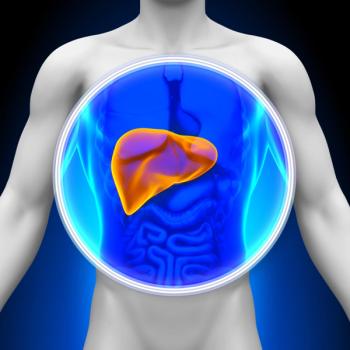
Miami Breast Cancer Conference® Abstracts Supplement
- 41st Annual Miami Breast Cancer Conference® - Abstracts
- Volume 38
- Issue 4
- Pages: 13-14
10 Real-World Effectiveness of Palbociclib (PAL) Plus Aromatase Inhibitors (AI) in Patients With Metastatic Breast Cancer (MBC) and Cardiovascular Diseases (CVD)
Background
Cardiovascular diseases (CVDs) can impact breast cancer treatment selection and clinical outcomes. A CDK4/6 inhibitor combined with endocrine therapy (ET) is now the standard of care as a first-line treatment for patients with hormone receptor–positive (HR+)/HER2-negative (HER2–) metastatic breast cancer. However, the effectiveness data of CDK4/6 inhibitors in patients with metastatic breast cancer and CVD are limited. We compared overall survival (OS) and real-world progression-free survival (rwPFS) of palbociclibplus aromatase inhibitors (AIs) vs AI alone in patients with HR+/HER2− metastatic breast cancer and CVD in routine United States clinical practice.
Methods
Using the Flatiron database, we conducted a retrospective analysis of patients with HR+/HER2– metastatic breast cancer and CVD who started first-line palbociclib plus AI or AI between February 2015 and March 2020. CVD prior to palbociclib plus AI or AI start was identified based on the National Cancer Institute-Comorbidity Index, including myocardial infarction, congestive heart failure, peripheral vascular diseases, and cerebrovascular diseases. OS was defined as months from the start of palbociclib plus AI or AI to death. rwPFS was defined as months from the start of palbociclib plus AI or AI to death or disease progression, based on clinical assessment or radiographic scan/tissue biopsy. Stabilized inverse probability treatment weighting (sIPTW) as primary analysis was used to balance baseline characteristics. Cox proportional-hazards models were used to estimate the relative effectiveness of palbociclib plus AI vs AI alone.
Results
Of 469 eligible patients, 160 (34.1%) received palbociclib plus AI and 309 (65.9%) received AI alone. Compared with AI alone, those treated with palbociclib plus AI were younger (77.0 vs 72.0 years) and more likely to have de novo metastatic breast cancer (28.2 % vs 38.8%), 2 or more metastatic sites (26.9% vs 46.3%), and lung/liver involvement (24.0% vs 31.3%). After sIPTW, patient characteristics were generally balanced. After sIPTW, the median OS (95% CI) was 40.7 months (range, 30.9-56.0) in the palbociclib plus AI group and 26.5 months (range, 23.3-37.3) in the AI group (HR, 0.732; 95% CI, 0.537-0.997; P = .0476). Median rwPFS (95% CI) was 20.0 months (range, 11.7-27.5) in the PAL plus AI group and 12.5 months (range, 9.7-18.3) in the AI group (HR, 0.679; 95% CI, 0.512-0.900; P = .0070). Consistent results were observed with multivariate Cox proportional-hazards models as sensitivity analysis.
Conclusions
First-line palbociclib plus AI is associated with prolonged OS and rwPFS vs AI alone in patients with HR+/HER2– metastatic breast cancer and CVD in a real-world setting. Further studies are needed to provide additional evidence of outcomes and safety of CDK4/6 inhibitors plus AI for patients with metastatic breast cancer with various comorbid conditions in routine
clinical practice.
Articles in this issue
Newsletter
Stay up to date on recent advances in the multidisciplinary approach to cancer.
































































































